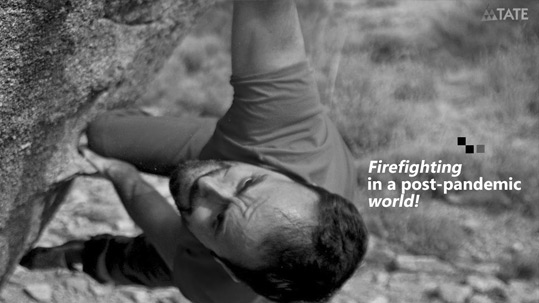o begin, let’s get the definitions of the terms clear and out of the way. The online Merriam-Webster dictionary defines a firefighter as: ‘a person who fights fires.’ It obviously doesn’t show any results for ‘firelighter’, which is why I need to clarify the sense it will be used in. A firelighter is not an arsonist or a pyromaniac. Rather, s/he is a person who sparks off future-directed ideas, thoughts, perspectives or frameworks. Now that the table is set, let’s move forward.
In true firelighter style, Malcolm Gladwell, one of my favourite authors who’s also a journalist and public speaker, set the context of resetting the rulebook for a post-pandemic world. The occasion was his ‘A Crisis is a Terrible Thing to Waste’ address at the April 27 – 29, Adobe Digital Summit for 2021.
Drawing on the most iconic movements of his generation, viz. Martin Luther King Jr.’s (MLK) Civil Rights Movement of the 1960s. In particular to the famous Birmingham campaign of the 1960s. The idea was to confront the notoriously racist police chief Bull Connor, and show what a horrible person he was, as well as how racist the Birmingham, Alabama system was. As expected, Connor ‘overplayed his hand,’ arrested protestors of all genders and ages until the jails were full, the media captured these racist atrocities and the world was made aware.
Malcolm drew a parallel with that, to a typical military-style hierarchical structure of operation; which can be summarised as:
- A closed system with a clear line between who belongs to the organisation and who doesn’t
- Disciplined, with a clear set of ideas, codes and conduct
- Centralised, with power in the hands of a small group of people
Today’s parallel to the MLK movement of the 60’s, would perhaps be the Black Lives Matter (BLM) movement, triggered by the death of George Floyd. This tech-enabled, networked model’s greatest examples, are the ‘Arab Spring’ uprising, the ‘Occupy Wall Street’ movement, Uber and AirBnB. Unlike the former hierarchical movement, this model can be described as:
- Not having a clear leader in charge, unlike MLK
- No clear ideology (other than a wide range of notions), unlike MLK’s movement
- A (seemingly) spontaneous response to an event, unlike MLKs thoroughly planned movement.
According to Malcolm, both the hierarchical and networked models co-existed pre-pandemic. The pandemic caused the networked model to win, thanks largely to Internet-driven technology and the rise of social media. The pandemic deconstructed hierarchy-driven models, with successful networked solutions. Putting an end to work as we knew it and creating new ways organisations and governments interact with consumers. This is big for businesses looking at the process of casting vision and strategy, at least for the next couple of years.
A lot of what Malcolm Gladwell said is relevant to India as well, and a lot of what he has outlined has not. Will the Indian Malcolm Gladwells please raise their hands or rather their voices.
Until then, we will see a lot of journalistic ink being expounded on firefighting efforts. Like how brands are helping India fight against Covid-19 and the quantum of aid they have pledged. Or listen to expert leaders dreaming up the ideal ways in which businesses can handle the second Covid-19 wave in India. Not that these are unimportant subjects to consider, but deep down, business strategists know that they will achieve nothing of lasting relevance, even six months to one year down the line? Comments welcome…

